These 11 Face Self Tanners Give My Skin the Most Even, Natural-Looking Bronze
For a faux glow without the sun damage.


Sophia Vilensky
As a beauty editor, I know that chasing a real tan is a one-way ticket to sun damage. But I'll be honest: there's something about a little bronze glow that makes me feel like the best version of myself. So, self tanner it is. I've tested just about every formula out there—see: tanners for pale skin, tanning drops, gradual tanners, you name it. But the stakes are higher when searching for the best face self tanners.
Thankfully, skincare innovation has come a long way, and patchy, uneven application is easy to avoid. Dihydroxyacetone (DHA)—the main ingredient in self tanner—reacts with amino acids in dead skin cells to create a browning effect that mimics a natural tan, explains Alessandro Mendes, Chief Innovation Officer at Cosmetica. Since DHA only affects the top layer of skin, the tan fades as dead cells shed and are replaced.
Many of today's face tanners go further by including barrier-friendly ingredients—hi, hyaluronic acid, aloe vera, and antioxidants—that help keep skin hydrated, plump, and smooth. The one catch? Face tanners fade faster than body tanners. This is because the skin on our face sheds more quickly due to frequent exposure to the elements and routine skin care. To keep my glow consistent, I usually reapply every few days.
After consulting with dermatologists and tanning experts, I've rounded up my go-to face tanners that give me that bronzed, glowing look. Seriously, the results are so natural that people always ask me about my latest tropical vacation.
The Best Self Tanners for Your Face
- Best Overall Face Self Tanner: Tan-Luxe The Crème Gradual Self-Tanning Face Moisturizer
- Best Face Self Tanner Wipes: Dr. Dennis Gross Skincare Alpha Beta Glow Pad
- Best All-Over Self Tanner: Dolce Glow Lusso Self-Tanning Mousse
- Quickest Developing Face Self Tanner: St. Tropez Sunlit Skin Bronzing Tint and Self Tan Face Serum
- Best Face Self Tanner Wand: Dolce Glow Contour Self-Tanning Sculpt + Glow
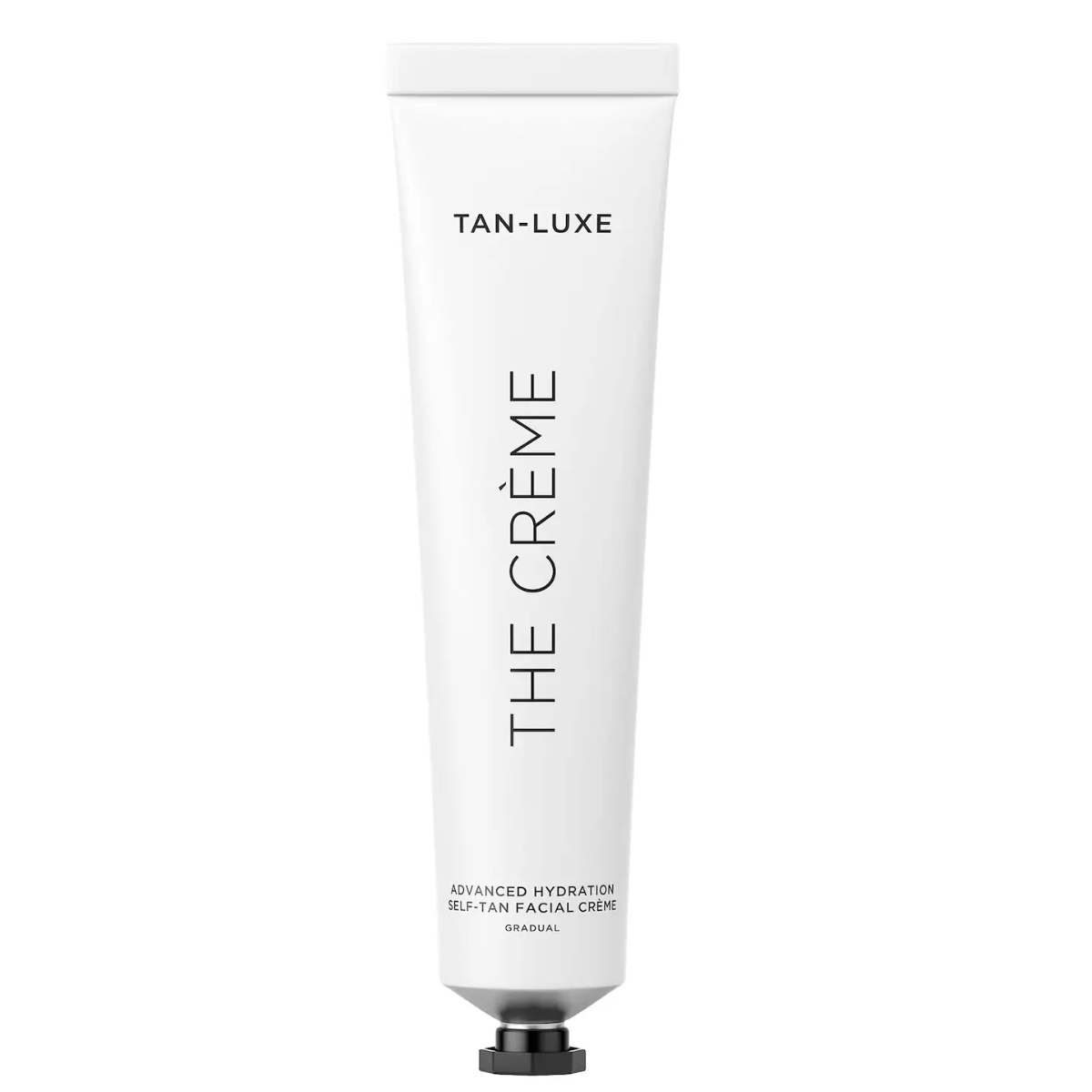
I think it's fair to say that the results speak for themselves with this top pick. A face moisturizer-tanner hybrid, Tan-Luxe's cream does more than just bronze your skin. The magic is in its barrier-friendly formulation—packed with skin-protecting antioxidants and lipids, alongside collagen-building amino acids, this tanner leaves your skin glowing after just a few hours and works to improve your complexion in the days to come. Because it's a gradual tan, apply as needed every night until you reach your desired color.
Shades: 1
Formula Type: Moisturizer
What I Love: Contains a powerful list of ingredients that support a healthy skin barrier; Feels like a traditional face moisturizer and doesn't smell
What I Don’t: The amount of product is on the lower end, especially if you prefer a darker tan
Review for MC: "This tanner feels just as luxe as my very expensive face moisturizers. It's not greasy and it doesn't get all over my clothes or bed. For me to build up to a deep tan like my testing photos, I have to do so over four nights. However, if I want something lighter, two nights will do the job. The best part though, is that it doesn't come off patchy—just an even fade." — Siena Gagliano, Contributing Beauty Writer

Siena Gagliano applies Tan-Luxe The Crème Gradual Self-Tanning Face Moisturizer over a course of four nights to her chest and face.
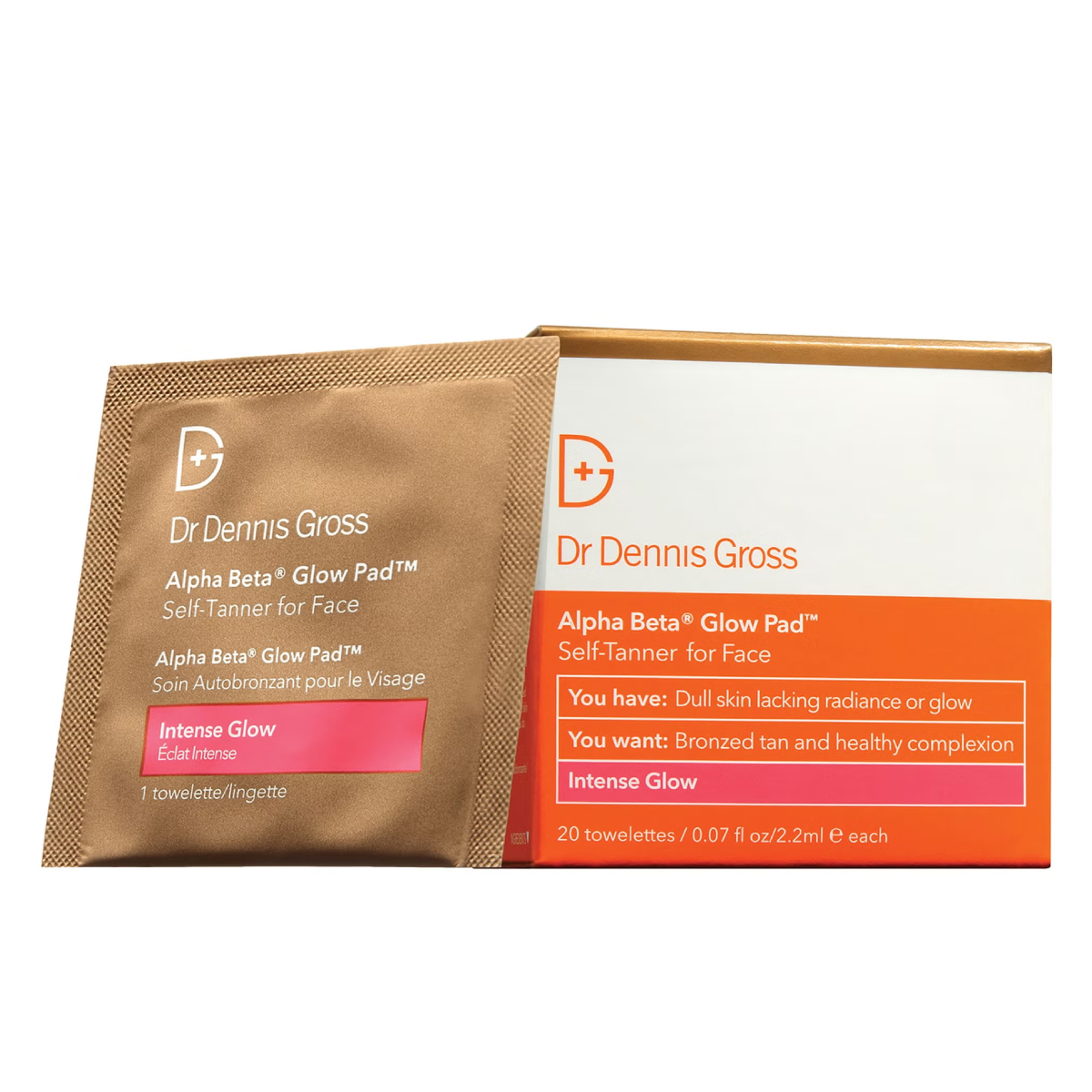
Dr. Dennis Gross' tan wipes are a must-try as they work to exfoliate your skin while enhancing your glow. It might sound counterintuitive—exfoliating removes self-tanner, right?—but these pads actually improve your tan. By exfoliating the skin gently, dead skin cells are cleared away, which preps the surface for DHA to work its magic more efficiently. The result? A more even, natural-looking tan that lasts longer.
Shades: 1
Formula Type: Wipe
What I Love: Mess-free application; Combines skin prep and tan application in one; Prolongs your tan
What I Don’t: Although each pad contains hydrating lactic acid, this may be too strong for dry skin types
Customer Review: "As a beauty editor who lives for a smart innovation, this dual exfoliating and self-tanning towelette is one of my all-time faves. Most face tanners force me to skip my nighttime actives so the color can develop properly, but not this one. It’s infused with AHAs and BHAs, so it gently smooths skin texture while simultaneously delivering a natural-looking glow. If you want more than just a tan (without spending more than you would on a standard facial self-tanner), this one’s 1000% worth adding to cart." — Marisa Petrarca, Contributing Beauty Writer
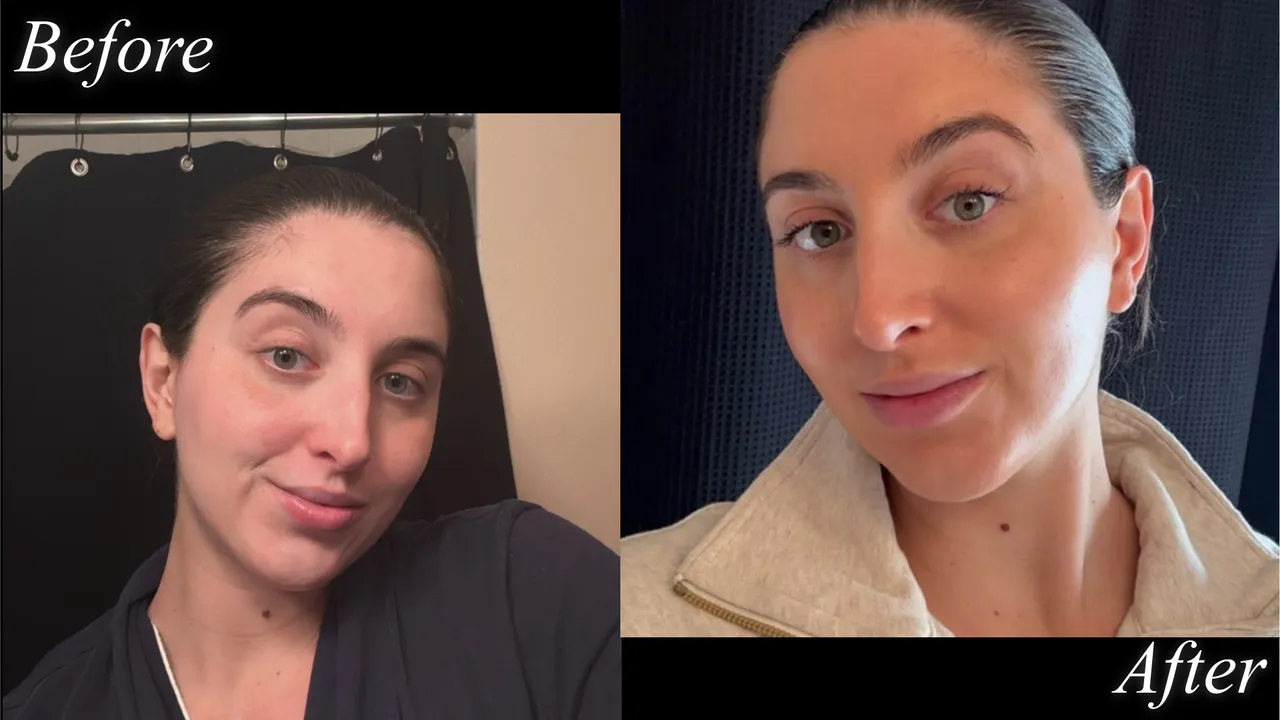
Contributing beauty writer Marisa Petrarca uses Dr Dennis Gross Alpha Beta Glow Pad Intense Glow for Face

Before we dive into why the Lusso Mousse is so great, let's address the obvious: this isn't a dedicated face tanner. That said, it's one of my go-to formulas for a head-to-toe tan, delivering a deep bronze with green undertones that cancel out any orange—something I find many face tanners struggle to achieve. Created by celebrity spray tan artist Isabel Alysa, this clean beauty brand puts skincare at the forefront of every product. It's packed with moisturizing oils like jojoba and macadamia, plus vitamin E to attract water and moisturizing squalane.
Shades: 1
Formula Type: Mousse
What I Love: Green undertone to counteract orange; Bronze color marker shows where you've applied it; Doesn't cling to dry patches
What I Don’t: Formula will get all over clothes and sheets
Review for MC: "It's a deep bronze color that I use to apply all over my body. When I apply it to my face, I use it on the contour areas and then spray just a bit of the Dolce Glow Hydrating Mist all over so it won't be a stark contrast against the untanned areas of my skin. It suits my olive-tone complexion perfectly, and looks totally legit." — Siena Gagliano, Contributing Beauty Writer

Siena Gagliano applies Dolce Glow Lusso Self-Tanning Mousse to the contour areas of her face with the Dolce Glow Kabuki Brush.

The newest face tan on this list comes from none other than St. Tropez—i.e., one of my favorite tanning brands that seems to get it right every single time. This formula has an impressive development speed, with a light bronze appearing in as little as one hour, and a deeper tan in just three. Unlike other fast-developers, this tanner is a serum formulation that imparts just a sheer wash of a bronzed color. The result is a stunning glow that can be worn alone or under makeup—no rinsing required. (PS If you want a perfect tanner for your hands, try the St. Tropez Purity Water—it's foolproof.)
Shades: 1
Formula Type: Serum
What I Love: Contains hydrating hyaluronic acid; Doesn't feel sticky; Works well under makeup
What I Don’t: Still has a bit of that tanner smell which can linger throughout the day
Review for MC: "I was shocked by how quickly this tan developed. It feels totally weightless on my skin, just like a regular serum would. It also left the lightest tint of color with a slight sheen that looks so pretty and makes my skin glow." — Siena Gagliano, Contributing Beauty Writer

Siena Gagliano before and three hours after applying the St. Tropez Sunlit Skin Bronzing Tint and Self Tan Face Serum with the new St. Tropez Tantour Face Brush.

A hack I've sworn by for years combines self tanner, a makeup brush, and a little precision. The result? A natural-looking contour that adds a bit of oomph to your skin, whether under makeup or on its own. Dolce Glow (hi, again) has combined it all in one with their first-of-its-kind self tanner contour wand—aka tantour wand. Use it daily as a bronzer or highlighter, and once it washes off, you'll be left with a subtle tan.
Shades: 1
Formula Type: Serum
What I Love: Contains four types of hyaluronic acid; Looks great over and under makeup; Has no fake tan smell
What I Don’t: Bottle often leaks; Not much product
Review for MC: "I love how easy this tanner wand is to apply—I just swipe it on using the built-in applicator and blend it out with an old makeup brush. It's great before makeup, or even by itself as it gradually develops in the next few hours." — Siena Gagliano, Contributing Beauty Writer

Siena Gagliano applies the Dolce Glow Contour Self-Tanning Sculpt + Glow wand and is pictured before blending it in.
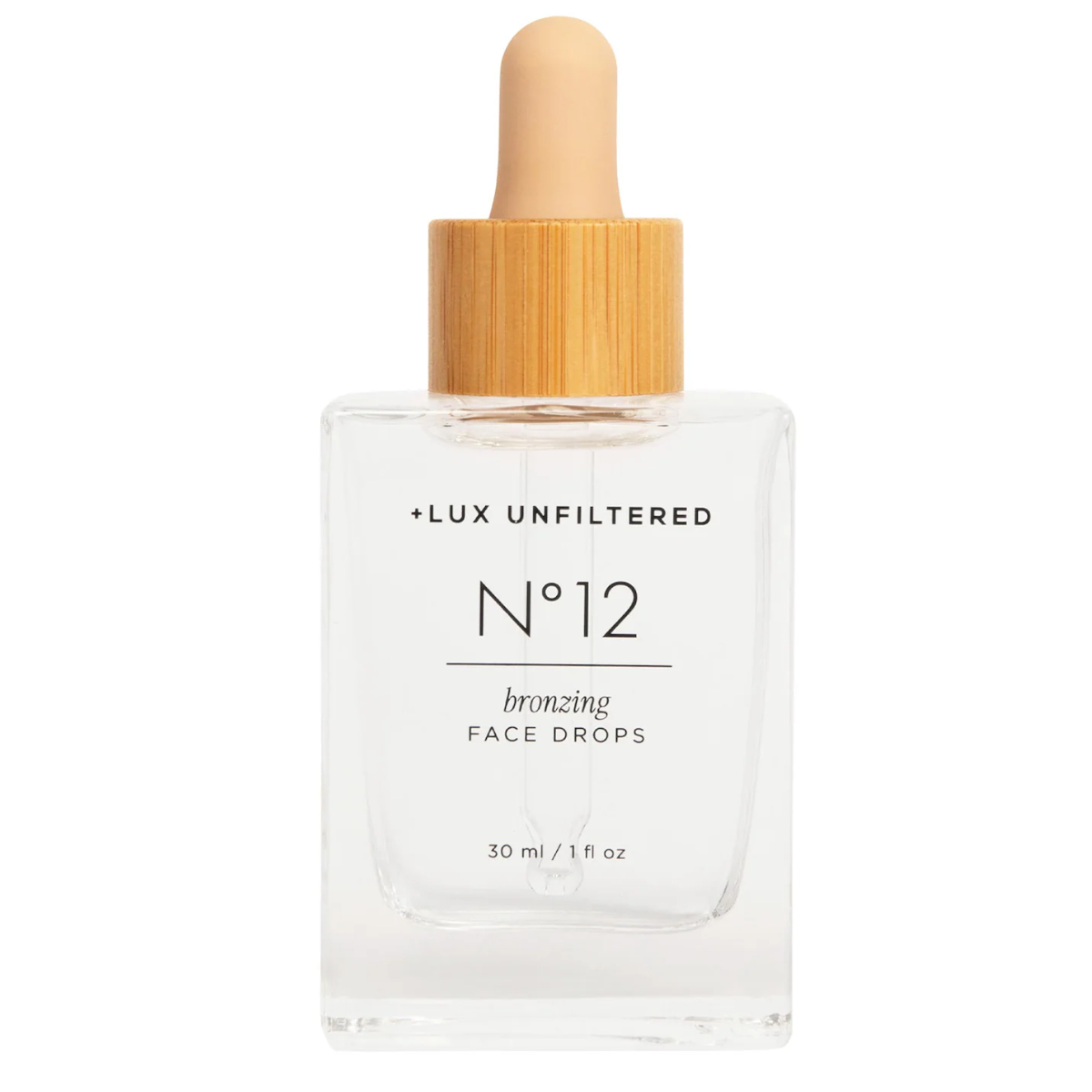
While plenty of facial tanning drops are on the market, +Lux Unfiltered's formula stands out for its ability to seamlessly blend into your skincare routine. "I love this brand because it's non-toxic, vegan, and fragrance-free, which is so important when products are being absorbed into your skin," says esthetician Aimee Carr. It also contains apple fruit extract, a mild exfoliant and skin brightener, alongside hydrating and plumping hyaluronic acid. With self-tanning drops, you can customize the amount you add to your favorite moisturizer for a deep tan or just a hint of bronze.
Shades: 1
Formula Type: Serum drops
What I Love: Easy to use; Fragrance-free; Contains ingredients filled with amino acids and proteins
What I Don’t: Tends to fade a bit quickly on my skin
Customer Review: "This has been the number one game changer in my makeup routine—meaning I wear MUCH less than ever. The drops completely even out my skin tone, while also giving a subtle glow (or heavy tan if I choose!), PLUS I feel like the other ingredients have really helped with acne issues I've had. It's a mix of tan, makeup, hydration, and skin health!" — Sephora

Afraid to take the plunge into self-tanner territory? No problem, with Isle of Paradise's new launch that doesn't contain DHA, you still get that faux tan bronze without committing. It works similarly to makeup, just wash it off at the end of the day when you're ready to ditch the tan. You can use it as a primer, base, highlighter, tan enhancer, or just skincare, as it contains ingredients like texture-reducing niacinamide and moisturizing squalane.
Shades: 1
Formula Type: Serum
What I Love: Formulated to work on all skin tones (i.e., as a bronzer for lighter skin and a highlighter for darker); Contains redness-reducing ingredients
What I Don’t: Some testers note that it transfers easily
Customer Review: "I saw a girl use this product on TikTok and decided to buy it. My skin is very sensitive and mostly everything irritates my eyes, but this worked perfectly. I mix this with my daily moisturizer, and it leaves my skin glowing. I will say that a little goes a long way." — Sephora
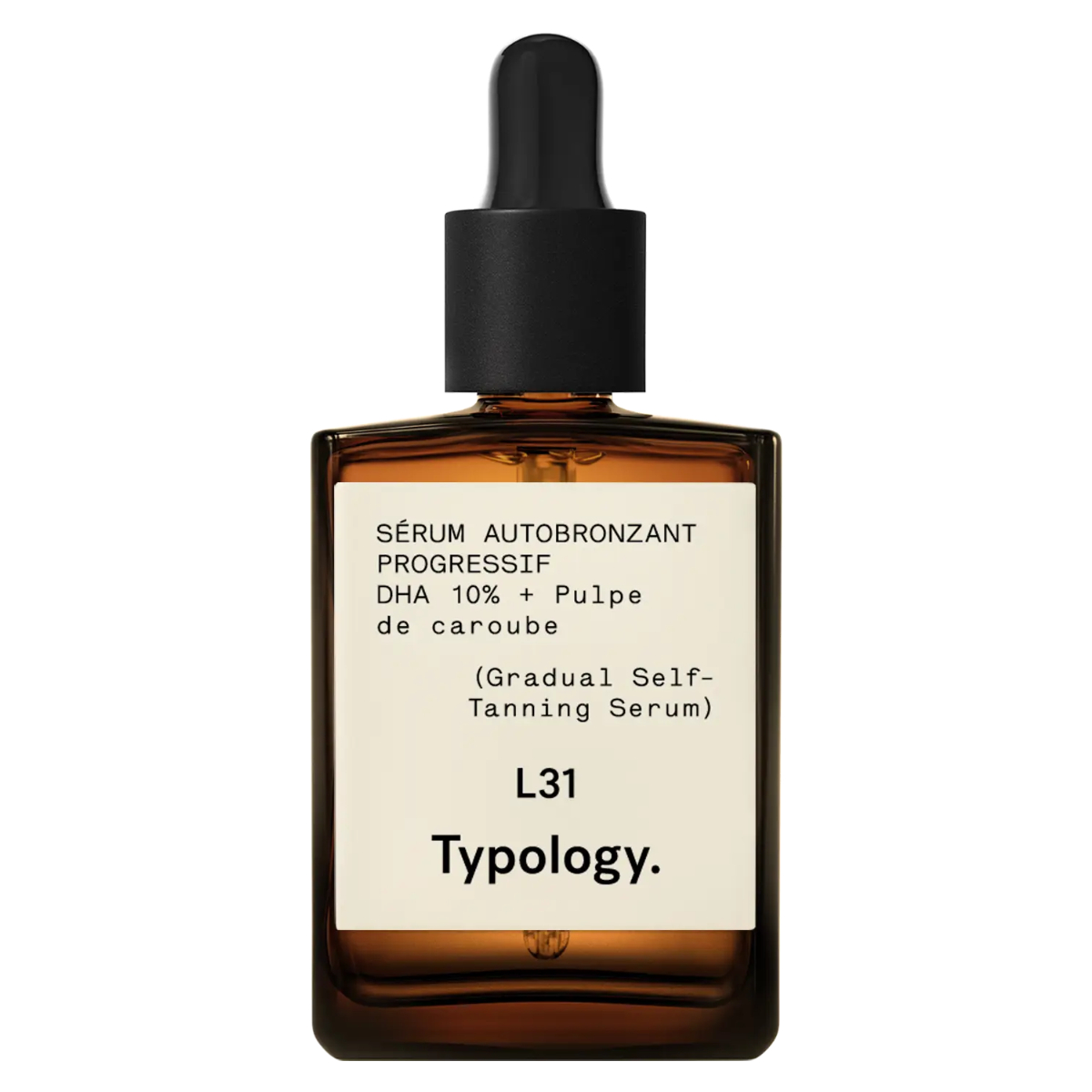
All hail French skincare. Almost au naturel and best for those with dull or fair skin, this vegan tanning serum is made with 10 percent bio-engineered DHA and carob pulp extract, which is a fancy way of saying that it uses natural ingredients to stimulate the skin's natural tanning process. Mix it into your moisturizer for a subtler effect or simply apply it straight to the skin for a bit of a deeper bronze, building up daily until you reach your desired tan. You'll notice how easily it penetrates your skin without ever feeling greasy or sticky.
Shades: 1
Formula Type: Serum
What I Love: Made with 99 percent naturally derived ingredients; Fragrance-free so it's safe for sensitive skin
What I Don’t: Often sold out
Customer Review: "This is an amazing product, it works wonders mixed into my hydrating cream. It gives me a wonderful sun-kissed look without looking orange, even on very fair skin." — Typology
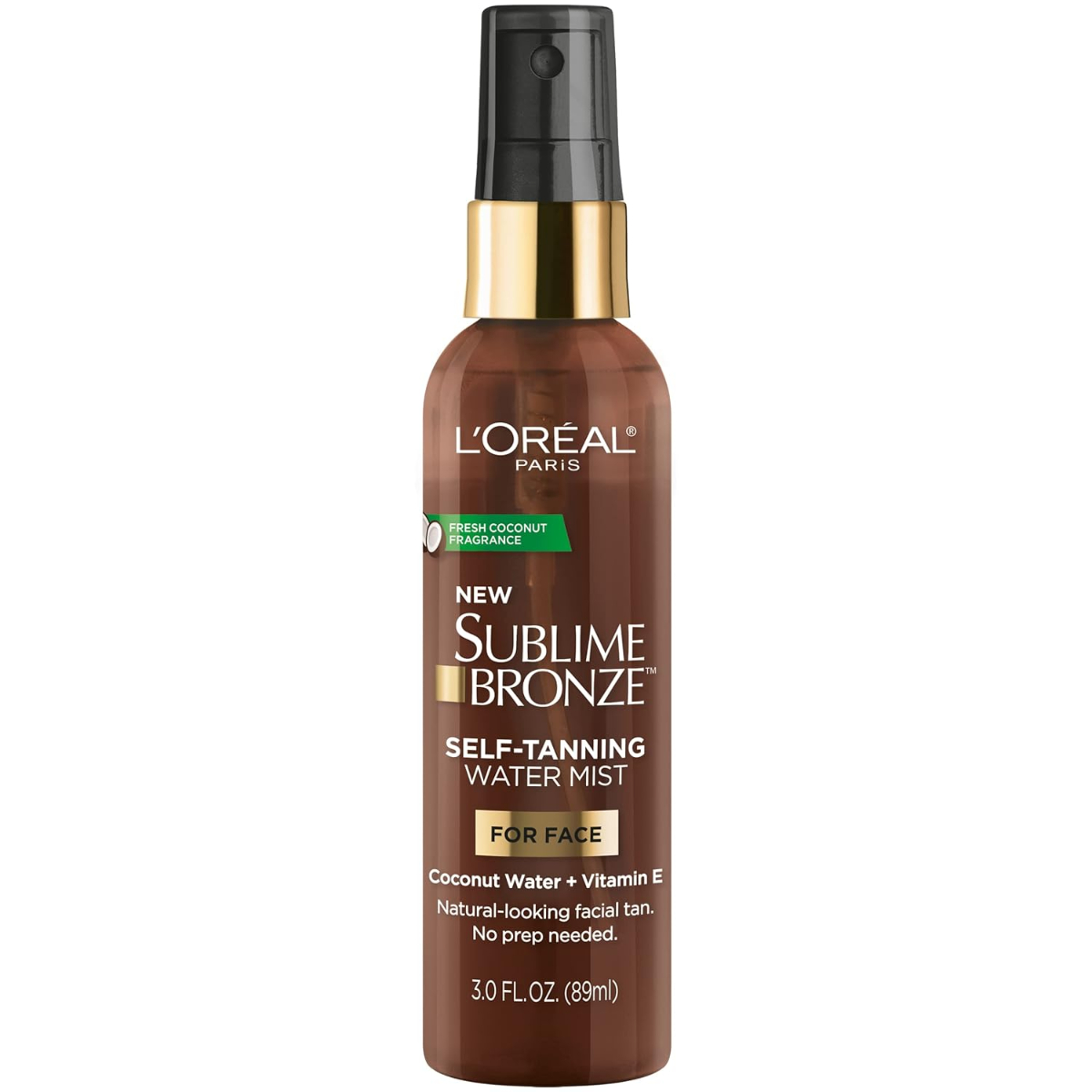
Infused with coconut oil for the full beach-day experience, L'Oréal Paris' self tanner is the crème de la crème of drugstore options. This one, in particular, has a misting formula that allows an even, streak-free tan in just a few spritzes. Close your eyes, spritz, and let it fall over you—it may seem scary, but due to the fine mist, it applies shockingly even. Weightless and incredibly easy to use, it's also infused with vitamin E for hydration and formulated without dyes or silicones.
Shades: 1
Formula Type: Mist
What I Love: Least expensive option on this list; Results in an even tan
What I Don’t: Testers note that you should use sparingly and make sure to apply under the chin and neck area
Customer Review: "I have used a ton of self-tanners. I can absolutely say this is the very best! I spray it on a dry makeup sponge and dab it all over my face, then I smooth it over while pulling it down my neck and behind my ears, and so-forth. You don't need very much, just a little damp with the product. I apply it only one time, too! It truly looks so natural and I know this because my friends asked me how I had time to lay out to get that tan." — Amazon
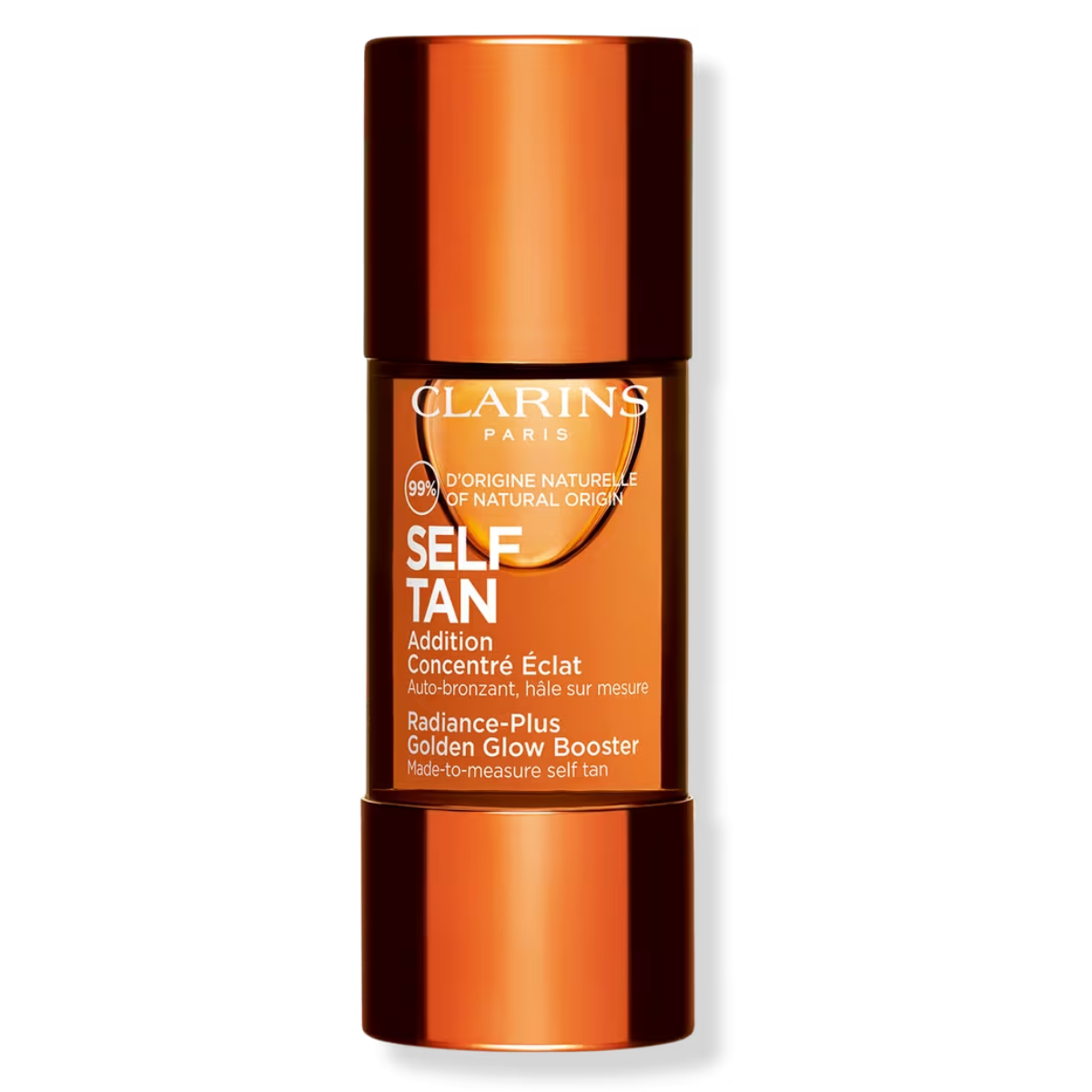
Jenny Hollander, Digital Director at MC, admits she's never been the most graceful when it comes to applying self-tanner: "No matter how magical the self tanner, I'm just not very good at applying it. Streaks, stained clothes, patchy spots—it's not the self tanner, it's me." So, what's her secret? These Clarins tanning face drops—i.e., the ultimate low-maintenance solution to an easy bronze. Just mix a few into your regular moisturizer and finish off your skincare routine. Hollander calls them "foolproof," and she's not wrong—she's been using them for years without a single streak in sight.
Shades: 1
Formula Type: Serum
What I Love: Buildable color; Contains soothing aloe vera and hydrating glycerin; Provides natural-looking color; Easy to apply; A little goes a long way
What I Don’t: Testers warn this particular formula can stain hands easily unless they wash with soap and water
Customer Review: "I am not a fan of fake tan, mainly because I can never get an even coverage. But this stuff is something else. A few drops in your moisturizer every other day and you will have a natural sun-kissed glow." — Ulta
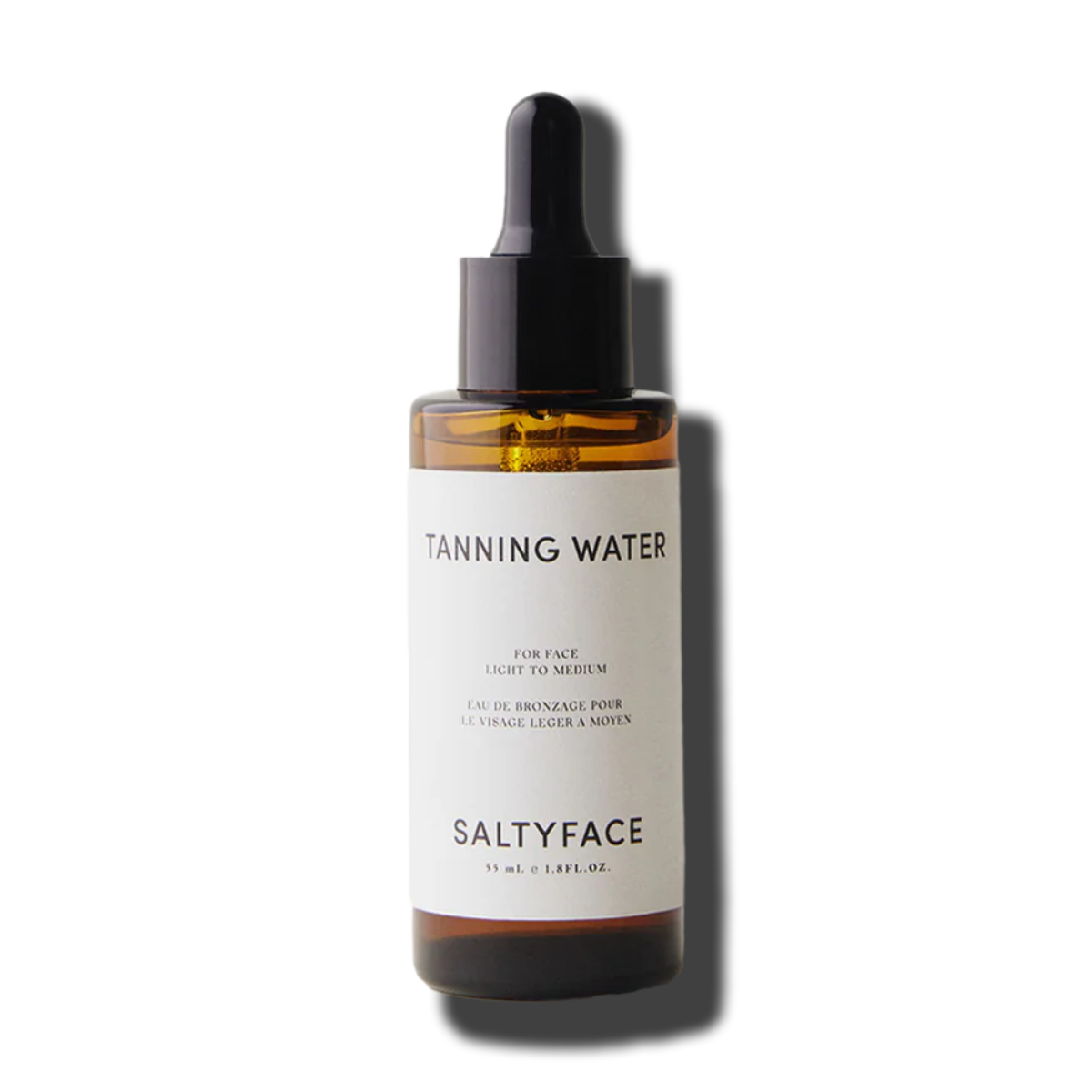
Saltyface's Tanning Water is a total game-changer for sensitive skin. This clean formula feels like water and absorbs in seconds, leaving no sticky residue—just a natural glow. It's specifically designed for the face, so you can trust it to be gentle while still giving you that sun-kissed look. Packed with soothing ingredients like aloe and chamomile, it works to calm your skin as it tans. Apply it with a kabuki brush at the end of your skincare routine, and wake up with a subtle, bronzed glow.
Shades: 2
Formula Type: Serum
What I Love: No need to rinse; Easy to apply; Gentle ingredients; Available in two shades
What I Don’t: Testers note that the lighter shade should only be used on very fair skin tones as it doesn't offer a great color payoff
Customer Review: "I am the mom of four teenage daughters. We have been through SO many tanners and too many to count that make them look orange/splotchy. This has been the best we have tried and also a clean product for their acne-prone skin." — Saltyface
What to Look for in a Face Self Tanner
- Formula
Face self tanners come in many formulations—i.e., drops, creams, mousses, mists, and wipes—all catering to different application preferences and skin types. Medical esthetician Aimee Carr prefers drops because they can be mixed in with your favorite facial moisturizer; you have control over how deep your tan is because you add the product. Mousses and creams typically offer a faster and more intense color payoff, while wipes are extremely convenient and great for travel.
- Shade
According to Mendes, your final color results will depend on multiple factors such as the concentration of DHA, the formulation's pH level, and your skin tone. "Some self tanners may provide a more natural-looking tan, while others may result in a deeper or more intense color," he shares.
- Ingredients
When shopping for a face self tanner, you should look for products formulated with gentle ingredients to minimize the risk of irritation and breakouts. Mendes suggests ingredients like hyaluronic acid, glycerin, and antioxidants.
"Self tanners are generally safe for most skin types and do not inherently cause acne. However, like any product applied to the skin, there's a chance of a breakout if the product clogs pores or irritates the skin," says board-certified dermatologist Divya Shokeen, M.D. "Choosing non-comedogenic self tanners and following proper application and exfoliation techniques can minimize this risk."
Fragrance-free formulas are also ideal, as fragrance can be hard on sensitive skin. However, this is harder to find than it sounds, as fragrance is often added to self tanners to mask the notorious smell of DHA.
How Does Face Self Tanner Work?
Self tanners work by temporarily staining the skin. This happens through a chemical reaction between the active ingredient dihydroxyacetone (or DHA, a colorless sugar derived from sources such as sugar beets) and the outermost layer of skin, aka stratum corneum.
"The reaction between DHA and amino acids in the skin is known as the Maillard reaction, similar to the process that occurs when cooking foods like bread or steak," explains Lisa Chevalier, a physician associate. "During this reaction, DHA interacts with amino acids on the skin's surface, resulting in the production of melanoidins and the subsequent bronzing of the skin."
This bronzed effect is also directly related to the amount of DHA in the product, which is why many self tanners are formulated to build upon themselves. "There are also other ingredients in these products that aim to increase the length of the tan and side effect of skin drying such as hydrators, antioxidants, and botanicals," she adds.
How to Apply Face Self Tanner
Because there are so many formulas, there are different rules for applying various facial self tanning products. Always read the instructions—if your skin is sensitive or you're not sure about the color, try a patch test. "This can help ensure compatibility with sensitive facial skin. It may take some experimentation to find the perfect self tanner that meets all of one’s needs and preferences," says Mendes.
Should You Apply Self Tanner on Your Face?
Self tanners are generally safe for most skin types and do not inherently cause acne. However, like any product applied to the skin, there's a chance of a breakout if the product uses heavy ingredients or causes irritation. Choosing self tanners that are specifically formulated for the face, and following proper application and exfoliation techniques can minimize this risk.
Why Trust Marie Claire?
For more than 30 years, Marie Claire has been an internationally recognized destination for news, fashion, and beauty trends, investigative packages, and more. When it comes to the products Marie Claire recommends, we take your faith in us seriously. Every product that we feature comes personally recommended by a Marie Claire writer or editor, or by an expert we’ve spoken to firsthand.
How We Tested
Marie Claire beauty editor, Siena Gagliano, went through a vigorous testing period where she reviewed dozens of self tanners. After determining the top picks alongside tanning experts, she tested the self tanner on her face considering how long it lasts, how it applies, the ingredients, and how it feels to compile this list of the 11 best face self tanners.
Meet the Experts

With over 20 years of experience in the Cosmetic industry, Alessandro Mendes has developed and deployed new concepts and innovative formulations for companies like Beiersdorf, P&G, and Natura.
Holding a Master's degree in Business Administration from FGV, Brazil, he has a Bachelor's degree in Chemical Engineering from both the Technische Universität Hamburg-Harburg, Germany, and from the Escola Politécnica, USP, Brazil.

Dr. Shokeen attended the University of California, Los Angeles, as an undergraduate and graduated with a major in psychobiology with an interest in biochemistry. She received her medical education on the East Coast at Drexel University College of Medicine, in Philadelphia, PA.
Due to her leadership and scholarly excellence throughout medical school, she was awarded a research opportunity as a dermatology pre-doctoral research fellowship at the University of Pennsylvania during her first and second years of medical school.

Lisa Chevalier is a board-certified physician associate and founder of SoVous Medical Spa and Laser Center on Manhattan’s Upper East Side. A few of Lisa’s favorite topics include the aesthetics industry’s issue with over-treating people, a review of various laser, light, and energy treatments (how they work, who they work for, long-term vs. maintenance options, etc.), how to make a skincare routine and makeup more efficient, and beauty trends vs. science in a practice.
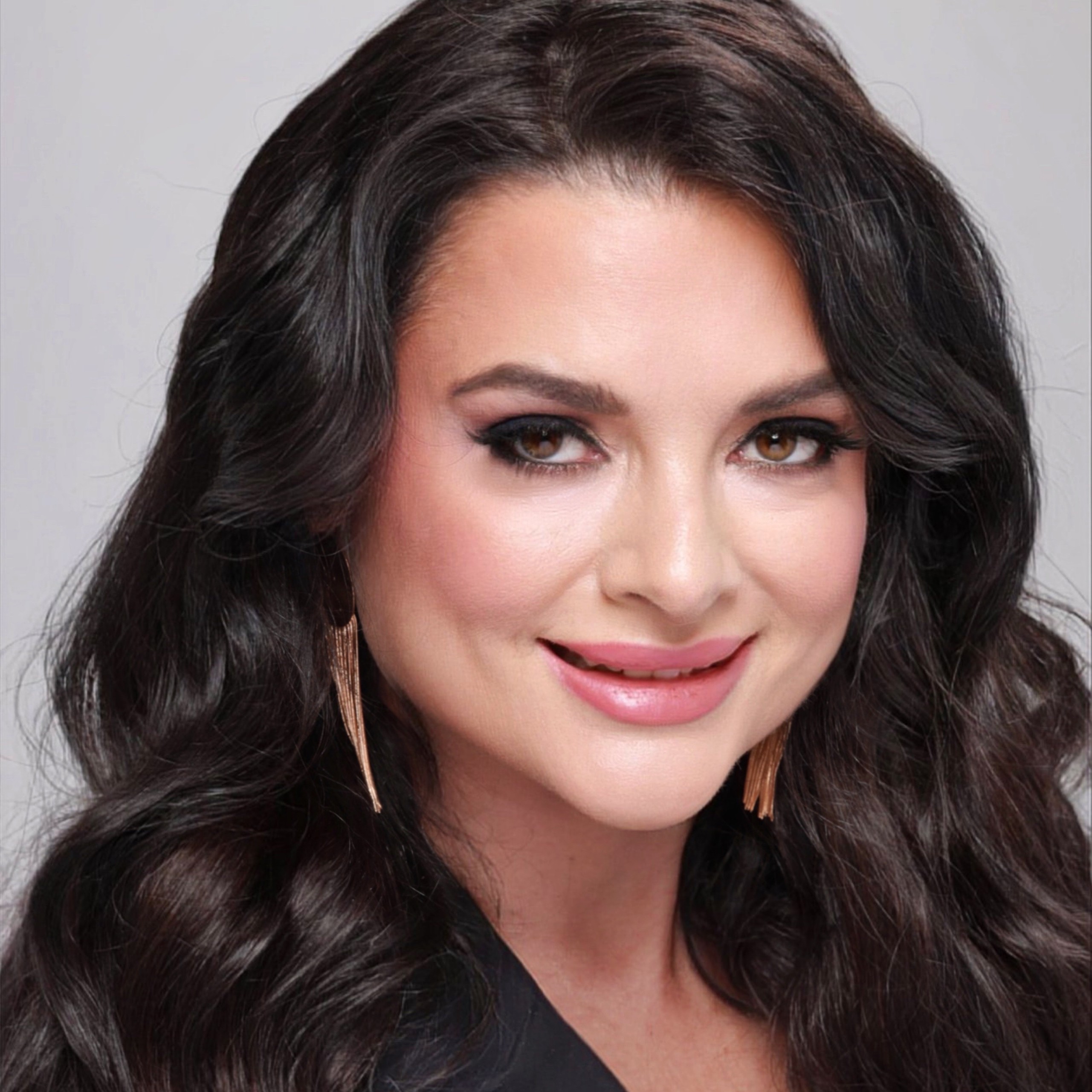
Aimee Carr is an expert medical esthetician, celebrity makeup artist, and founder of VooDoo Makeup.
Get exclusive access to fashion and beauty trends, hot-off-the-press celebrity news, and more.

Siena Gagliano is the Beauty Editor at Marie Claire, where she writes and edits reported features, trend stories, and expert-backed shopping roundups. Before joining the team full-time, she was an editor at Cosmopolitan, where she specialized in SEO-first beauty content and commerce strategy. Her bylines have also appeared in Allure, ELLE, Bustle, Well+Good, Popsugar, and Women's Health, covering everything from the best products for brighter, glowier skin to the science behind face mapping. Curious about the behind-the-scenes magazine life and her go-to beauty picks? Follow her on Instagram at @sienagagliano.
- Sophia VilenskyFreelance Writer